Latin percussion bells are vital to genres such as Afro-Cuban rumba, salsa, samba, and beyond. Their journey—from traditional African rituals to contemporary global music—is a powerful testament to cultural adaptation, innovation, and enduring rhythm.
Cultural and Historical Origins
African Roots
The origins of Latin percussion bells lie in West Africa, where iron bells were central to both music and spirituality. Among the most significant are the agogô, gankogui, and klama (also known as kanganu), each rooted in the cultural practices of distinct ethnic groups.
The agogô, from the Yoruba people of Nigeria, typically consists of one or two conjoined bells producing contrasting pitches. It was used in religious ceremonies to provide rhythmic structure and carry spiritual significance. In Ghana and Togo, the Ewe people developed the gankogui, a double bell with high and low tones. It serves as a timekeeper in Ewe drumming ensembles, anchoring complex polyrhythms.
The Fon people of Benin use the klama or kanganu—a single handheld iron bell—in Vodun (Voodoo) ceremonies. Like the gankogui, it maintains rhythm but also plays a spiritual role, marking transitions, summoning deities, and reinforcing chants with its sharp, resonant tone. Though less widely known outside Africa, it holds similar ritual and musical functions.
These bells were more than instruments; they were spiritual tools and cultural anchors. Through the transatlantic slave trade, their rhythmic and symbolic roles were carried to the Americas, where they became foundational to Afro-Caribbean and Afro-Latin musical traditions such as rumba, samba, and son.
Transatlantic Migration and Transformation
Between the 16th and 19th centuries, the transatlantic slave trade forcibly uprooted millions of Africans, displacing them to various parts of the Americas. Along with them traveled a rich array of musical traditions, deeply embedded in communal life, spirituality, and cultural expression. Among these traditions, bell instruments—notably the agogô, gankogui, and various types of iron or wooden idiophones—played a crucial role in both rhythmic structure and spiritual signaling.
Cultural Adaptation and Musical Continuity
Despite the brutality and dehumanization of slavery, African musical practices proved resilient and adaptable, transforming and merging with local customs to form new syncretic genres and rituals across the Americas.
Structural Evolution of Bells
Early Forms
Early bells were typically hand-forged from iron or brass, often repurposed from recycled metals. Traditional designs included two bells connected by a handle, offering contrasting pitches used for timekeeping, polyrhythmic layering, and melodic phrasing.
Adaptations in the Americas
Over time, bell designs adapted to meet new musical needs. Some evolved into multi-bell instruments, providing greater melodic variety. Others were redesigned for mounting on percussion racks or drum kits. The cowbell, originally an agricultural tool, was transformed into a key percussion instrument—especially in Cuban and Puerto Rican dance music.
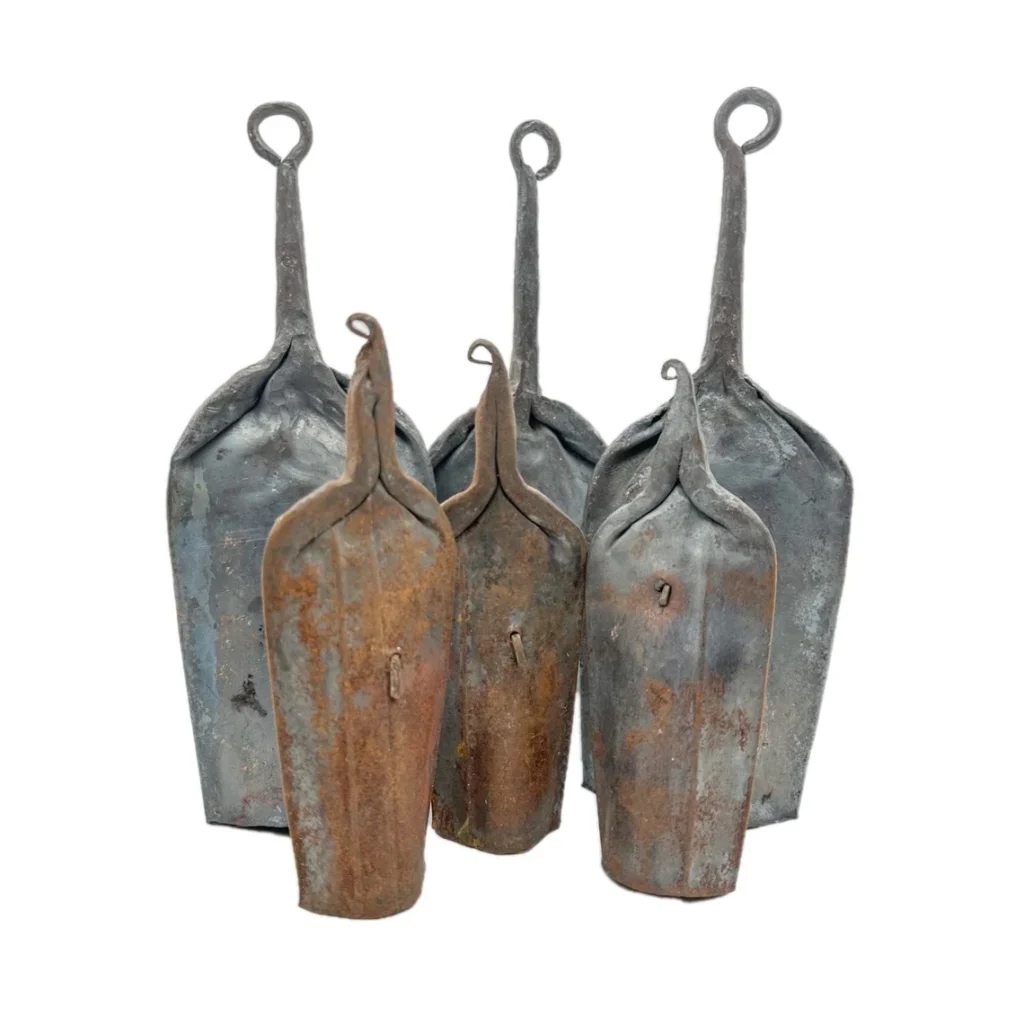
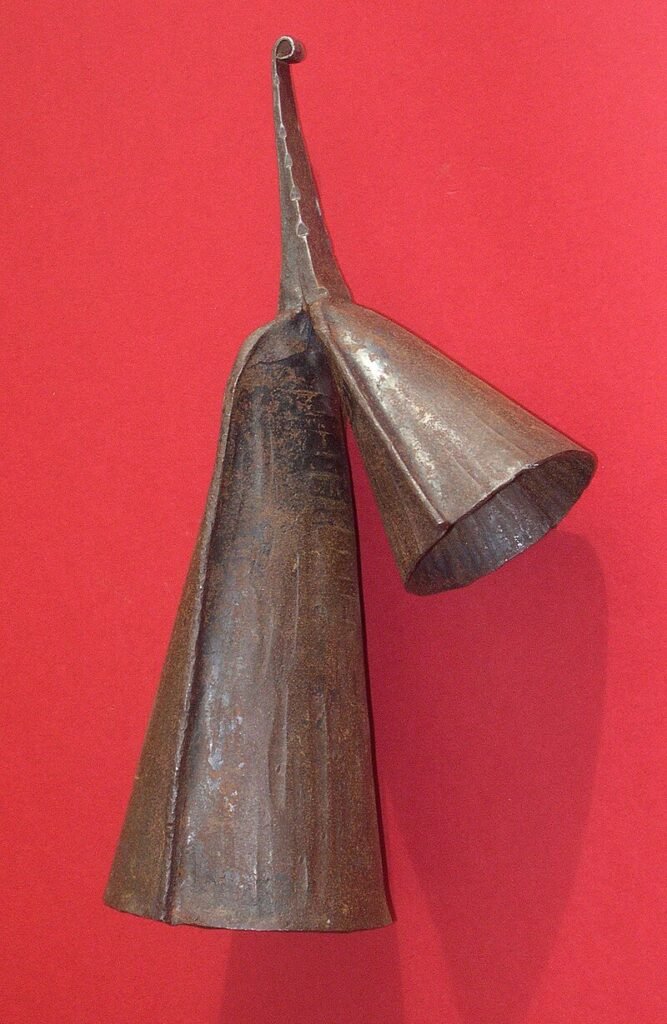
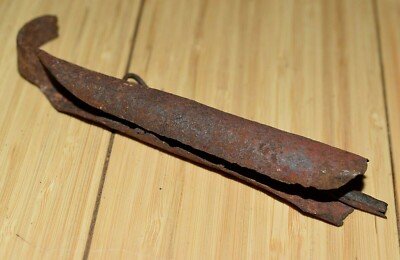



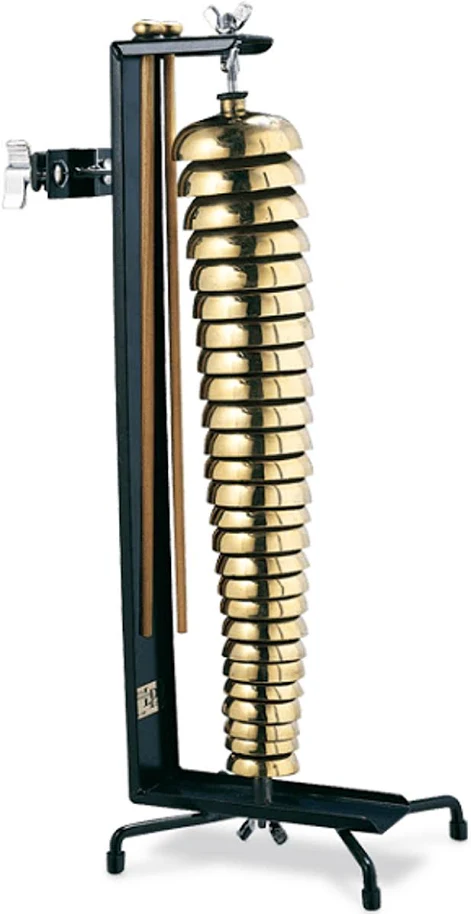

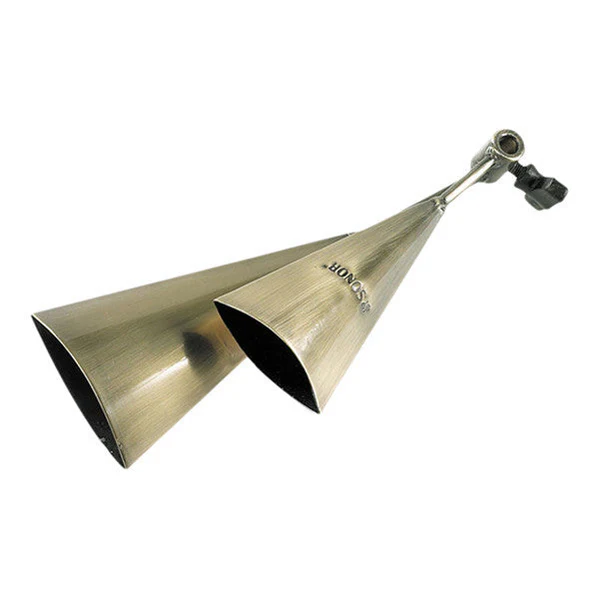

Timeline of Bell Evolution
- Pre-1500s: Agogô bells are central to West African ritual, communication, and drumming traditions.
- 1500s–1800s: Bells arrive in the Americas via the slave trade.
- 1700s–1800s: Integration into Afro-Caribbean religious and folk music.
- Early 1900s: Bells appear prominently in Afro-Cuban ensembles.
- 1940s–1950s: Mambo and Latin jazz popularize the use of cowbells.
- 1960s: Latin Percussion (LP) standardizes cowbell production.
- 1970s–1980s: Salsa incorporates multiple bell types, such as bongo and cha-cha bells.
- 1990s–2000s: Artisanal makers like JCR Percussion gain recognition.
- 2000s–Present: Bells expand into electronic, fusion, and world music styles.
- Today: Innovations in craftsmanship, design, and technique keep bell traditions alive and evolving.
Craftsmanship: Artisanal and Industrial Traditions
Artisanal Makers
Many early bells were hand-crafted by local blacksmiths using recycled materials. This artisanal tradition endures today, with makers producing instruments prized for their unique tone and cultural authenticity.
One of the most celebrated is JCR Percussion, founded by Cali Rivera in the Bronx. Rivera, originally from Puerto Rico, crafted bells, timbales, and bongos beloved by salsa and Afro-Cuban musicians for their warmth, clarity, and build quality. JCR instruments became iconic and remain sought after by serious percussionists.
Artisan-made bells often reflect regional identity and heritage, with forging techniques passed down through generations. Each bell is valued not only for its sound but also for its cultural lineage.
Industrial Production
By the mid-20th century, companies like Latin Percussion (LP) began mass-producing bells. Founded in 1964 by Martin Cohen, LP made percussion bells accessible and consistent, crafting instruments from high-grade steel for performance and studio settings.
These industrial bells offered precise tuning, durable construction, and standardized sizing—ideal for professional musicians, touring acts, and schools.
Artisanal vs. Industrial Bells: A Comparison
| Feature | Artisanal Bells | Industrial Bells |
|---|---|---|
| Craft Method | Hand-forged from recycled metals | Machine-made from high-grade steel |
| Sound | Organic, warm, resonant | Bright, cutting, consistent |
| Cultural Significance | Rooted in tradition and ritual | Designed for stage and studio |
| Tuning | Tuned by ear | Precisely tuned and standardized |
| Availability | Limited, often niche | Widely available worldwide |
| Sustainability | Often eco-friendly | Less environmentally specific |
Types of Bells in Latin Percussion
- Agogô Bell: Brazilian origin; typically two bells of different sizes. Used in samba, capoeira, and Afro-Brazilian religious music.
- Cowbell: Single metal bell with a sharp tone, essential in salsa, mambo, and Latin jazz.
- Mambo Bell: Larger cowbells used in mambo; played by timbaleros to emphasize clave and rhythmic accents.
- Cha-Cha Bell: A small, high-pitched cowbell used for bright accents in cha-cha-cha and timbale setups.
- Campana/Cencerro: Handheld cowbell played by bongo players, a staple in salsa and Latin jazz.
- Comparsa Bells: A set of bells used in Cuban carnival street music (comparsa). Typically mounted and played with sticks, producing a syncopated, celebratory rhythm that drives the ensemble.
- Tubular Bells/Chimes: Tuned metal tubes struck with mallets, used for melodic or textural effects in orchestral and fusion Latin music.
- Bell Tree: A row of small tuned bells mounted vertically, producing shimmering cascades in modern and experimental music.
- Timbale Bells: Bells mounted on timbales to enhance rhythmic interplay.
Musical Roles and Rhythmic Functions
Afro-Latin Foundations
Bells often align with or complement the clave—the rhythmic foundation of much Afro-Latin music. In both sacred and secular contexts, bells guide dancers, signal transitions, and anchor ensemble timing.
Ensemble Use
In salsa and mambo, cowbells help drive the rhythm section, with timbaleros using multiple bells for dynamic contrast. In Latin jazz, bells contribute to layered polyrhythms and improvisation. In modern fusion, bells are integrated into electronic and global setups, continuing to evolve with technology.
Notable Bell Players and Innovators
U.S. & Caribbean Artists
- Tito Puente (Puerto Rico/U.S.): Master of timbales and mounted cowbells in mambo and Latin jazz.
- Ray Barretto (U.S.): Conguero and bandleader who emphasized bell grooves in salsa.
- Mongo Santamaría (Cuba): Fused Afro-Cuban rhythms with jazz using bells.
- Chano Pozo (Cuba): Introduced batá and bell rhythms into bebop.
- Cali Rivera (JCR): Master craftsman whose bells became legendary in Latin percussion.
- Changuito (Cuba): Innovated modern Cuban styles with advanced bell techniques.
Global Innovators
- Martinho da Vila (Brazil): Highlighted the agogô in samba and MPB (Música Popular Brasileira).
- Babatunde Olatunji (Nigeria): Popularized African rhythms and bell work in the West.
- Babá Ken Okulolo (Nigeria): Preserved and taught traditional West African bell techniques.
- Pepeu Gomes (Brazil): Blended samba with rock, adding unique bell textures.
- Totó Gutiérrez (Colombia): Integrated bells into folkloric and contemporary cumbia.
- Ubaldo “Chimbero” Jiménez (Dominican Republic): Helped define the merengue rhythm with bells.


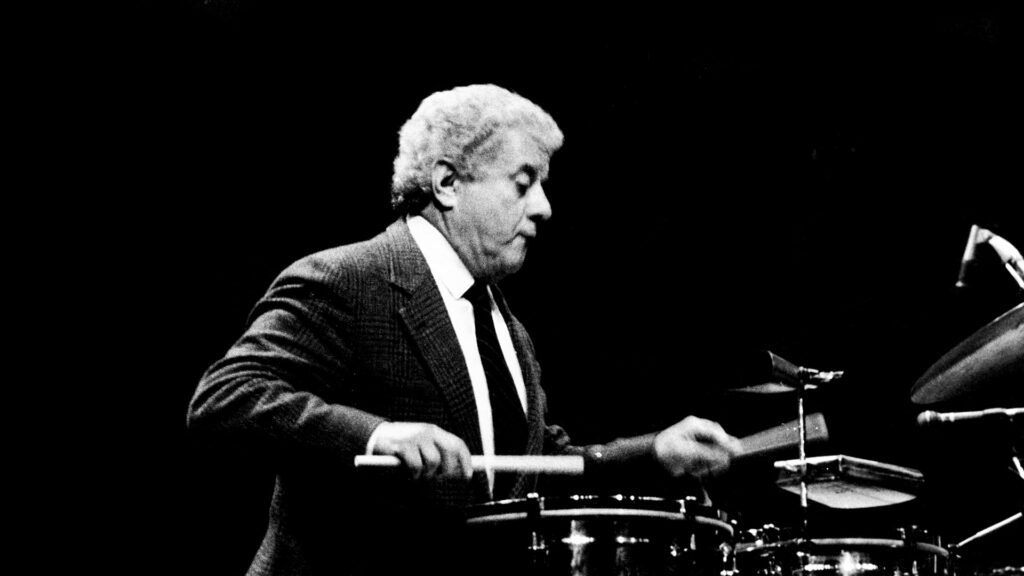

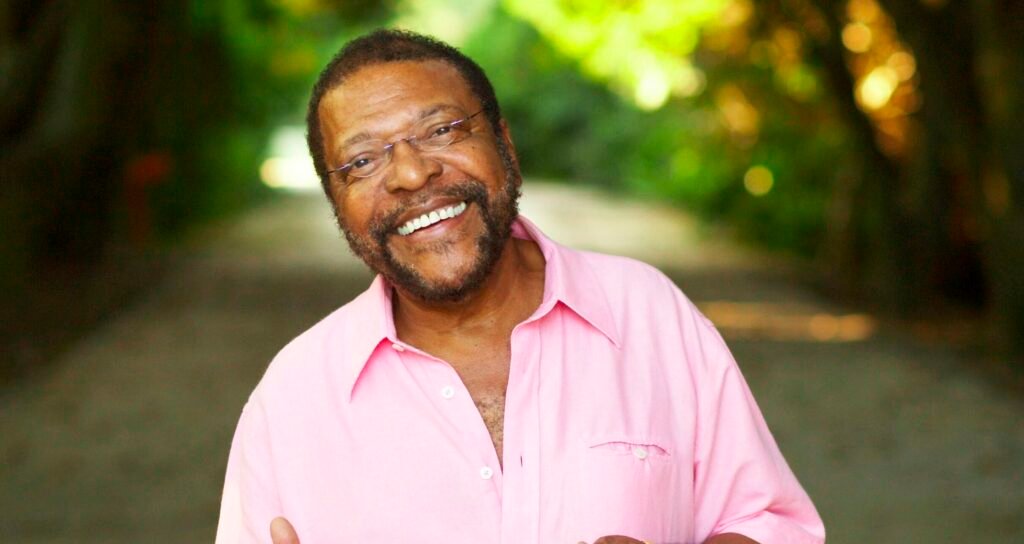
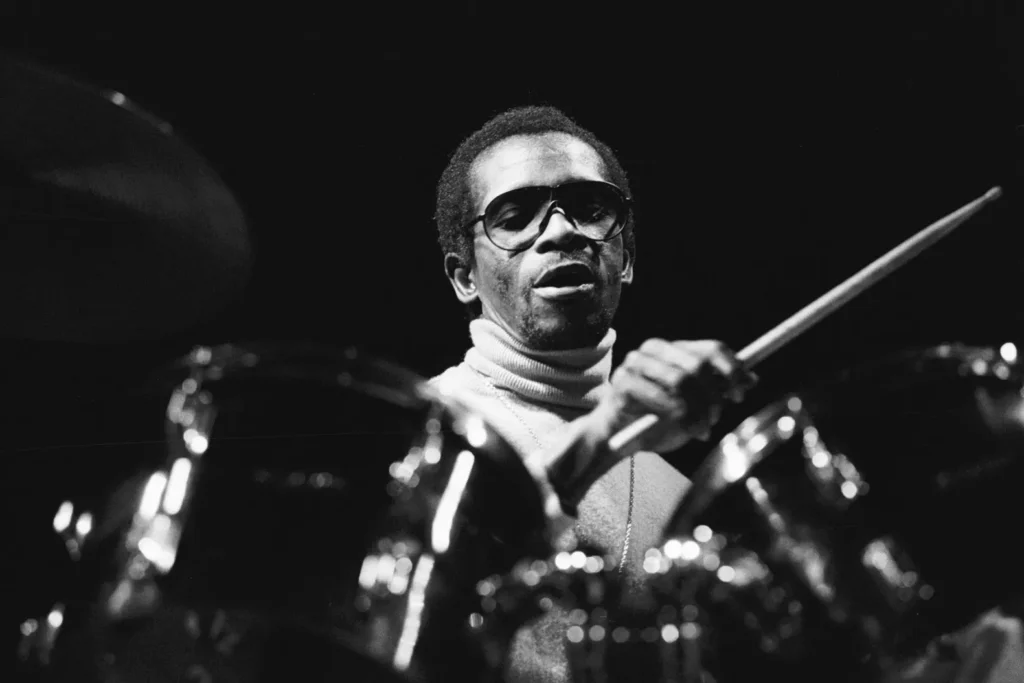
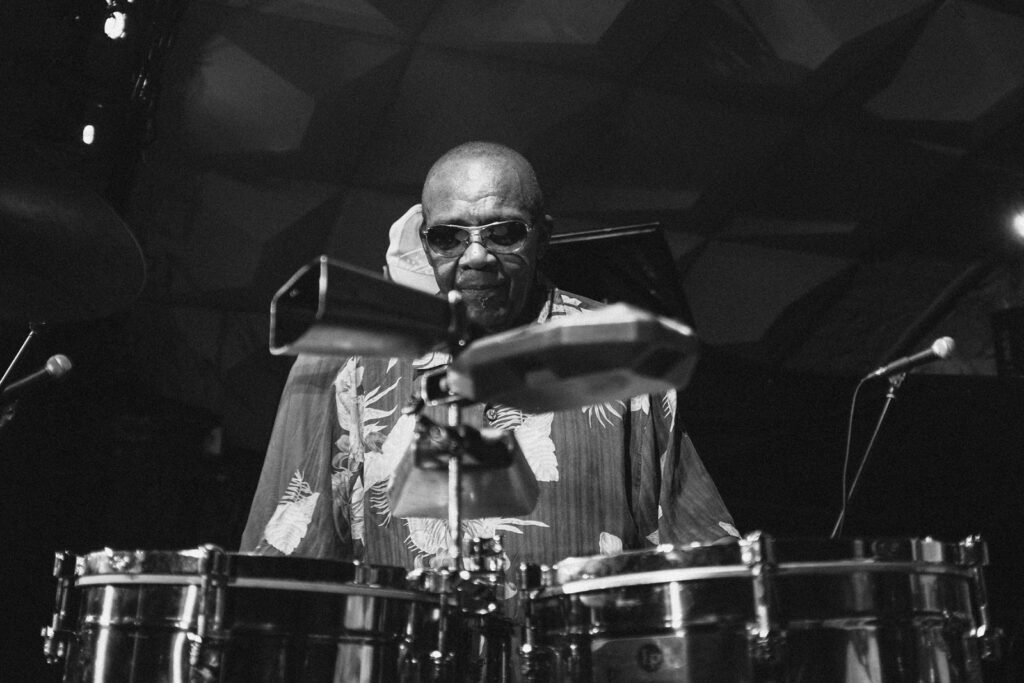
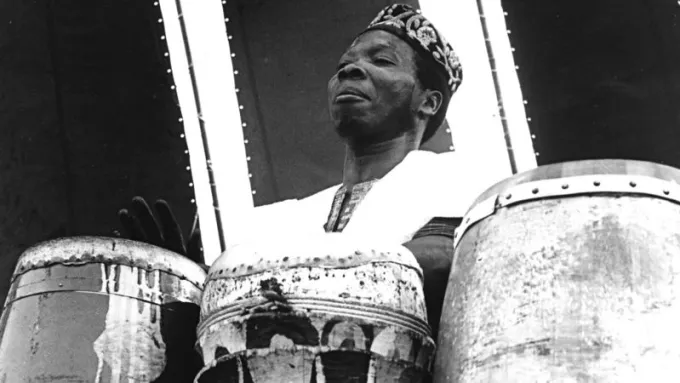
From African rituals to New York salsa clubs, the Latin percussion bell has evolved into a dynamic and expressive instrument. Whether handcrafted by artisans or mass-produced for global stages, bells continue to anchor, drive, and color the music of the world—resonating with deep history and boundless creativity.